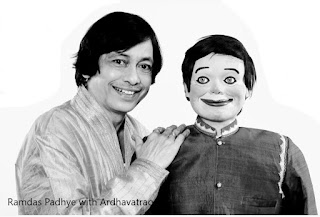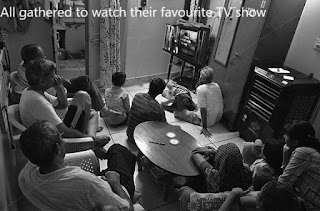Satyen was a conscientious employee and had spent close to a quarter century in a private bank. A devoted family man, he found solace in his cosy two-bedroom flat, sharing life's journey with his wife and adult children. Life, with its inevitable ebbs and flows, tested him as it did everyone else, but Satyen firmly believed that resilience in the face of adversity was the key to happiness.
Meanwhile, Amit, Satyen's son, carved his path in the financial world. Armed with degree in Statistics and Economics and a post-graduate degree in Business Management, he navigated the realm of mutual funds as an analyst with an asset management company. Collaborating closely with Tushar, his affable colleague from marketing, they forged a bond beyond the confines of the office, nurturing dreams of entrepreneurial success. Their friendship blossomed over shared meals, movie nights, and spirited debates during IPL matches.
And this is when, given the bond that had developed between them, they decided to venture out on their own. They reasoned that with Amit's analytical skills and Tushar's marketing prowess, they would start a financial advisory business and if they were able to scale up operations, then the ultimate aim was to launch an equity fund of their own.
Amit sounded Satyen about their plans to start a new venture and was pleasantly surprised that Satyen, though having no entrepreneurial experience himself, was enthusiastic about it. Amit was probably not aware that deep within Satyen too had wanted to venture out on his own. But, probably lacking the risk appetite or not wanting to rock a steady boat, he never worked on it.
As Amit and Tushar delved deeper into planning their venture, resigning from their current jobs to focus wholeheartedly on their newfound endeavour became inevitable. Striking a balance between professional commitments at work and entrepreneurial aspirations became increasingly taxing, prompting them to take the leap of faith. They put in their papers a few days apart, hoping the company's management would not read too much into their departure.
That Satyen was enthusiastic about this new venture, as Amit realised later, was an understatement. At a family get-together, he spoke to close relatives freely about Amit's new venture. Not only did he speak about Amit's plans but also about how the mutual fund industry was poised to grow adding that presently people preferred investing their savings in Equities and Mutual Funds rather than parking them in safe havens such as Fixed Deposits, Government Bonds and Debentures.
The responses that Satyen received were not entirely to his expectations. Whilst his siblings and their spouses were polite and unhesitatingly wished Amit "All the very best", there was a 'but' in their tone. They spoke of exercising caution and about the high failure rate in start-ups. He was also queried whether Amit had a well-paying job, and if so, why was he throwing it away. Some even inquired about their source of funds for the office rentals, salaries and administrative expenses, and if Satyen had the financial means to back Amit if required. On reflection, Satyen felt that his extended family did not share his excitement about Amit's leap of faith and his aspirations. He thought it best not to talk about it socially and let Amit's work speak for itself.
Amit's notice period was coming to an end, and one evening, leaving office early he decided to visit his father at work. As they chatted over a cuppa in Satyen's cabin the Vice President of the Bank, Mr. Shenoy, passing by, taking notice of Amit, stepped in. "How are you, young man? So, what have you been up to lately?" he asked in his usual affable voice. The VP too, was with the bank for several years and knew family members of his close associates well, having interacted with them at dinners and get-togethers organised by the bank.
Amit, hesitant at first, let him know of his plan to embark on his journey in the world of finance. The VP looked at him enquiringly, nodded his head, then invited both of them to his cabin.
As they seated themselves on the sofa in his spacious cabin, the VP enquired of Amit how he planned to go about his new venture. Having heard Amit patiently, the VP now focussed his attention on his partner, Tushar. He asked Amit what kind of business Tushar achieved monthly and whether he was able to meet company targets. Having satisfied himself that Tushar had good connections and the drive to scale up the business, he turned to the administrative essentials. He enquired about the proposed location of their new office, what type of staff they proposed to have, and finally about their finances. Along the way, he also offered his views and helpful tips that he had acquired over the years working in the world of finance whilst emphasizing the trials and tribulations of entrepreneurship. But, he then added, "this is how all great businesses are built". The rock-solid foundation of business is the founders' strong sense of self-belief, a can-do attitude mixed with a large dose of perseverance.
The VP then fell silent letting Amit soak in all that he had said. After a few moments of silence, he spoke again. "Amit, I am proud that you have taken the bold step of venturing out on your own. If you require any assistance which is within my means to provide, I would be very happy to help. Good luck, my boy!"
As the father and son duo left the Vice President's office, Satyen could not but contemplate the contrast between the response of his relatives and that of his boss to the news of Amit's new business venture.
Armed with newfound encouragement and a mentor's blessing, Amit embarked on his entrepreneurial odyssey with renewed vigour, and the knowledge that now not only did he have his father's unwavering support but also that of a true well-wisher on whom he could count for guidance and invaluable insights.


















